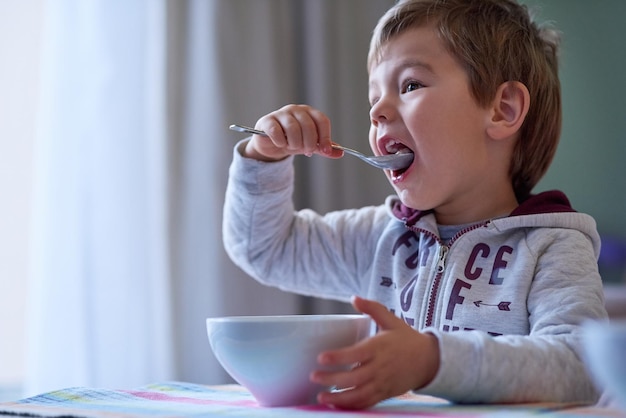Looking to shed some pounds? You’re not alone. For women, weight loss can be a constant battle, but the question remains – what works best, diet or exercise? In this article, we delve into the age-old debate of diet versus exercise and explore which approach yields the most effective results for women’s weight loss.
Understanding Weight Loss: Calories In vs. Calories Out
Weight loss is a simple concept – you need to burn more calories than you consume. This is known as the “calories in versus calories out” principle. When you consume fewer calories than your body needs to maintain its current weight, it will start using stored fat as energy, resulting in weight loss. On the other hand, if you consume more calories than you burn, your body will store the excess energy as fat, leading to weight gain.
While this principle seems straightforward, the actual process of weight loss is complex and influenced by various factors such as genetics, metabolism, hormonal balance, and lifestyle choices. However, understanding the basic concept of calories in versus calories out is crucial in determining the most effective approach for women’s weight loss.
The Role of Diet in Weight Loss
Research suggests that diet plays a more significant role in weight loss than exercise. Cutting calories and consuming a nutritious, balanced diet is crucial for achieving and maintaining a healthy weight. A well-planned diet can help create a calorie deficit, making it easier for your body to burn stored fat for energy.
When it comes to choosing a diet for weight loss, there are various options available. Some popular diets for women include the Mediterranean diet, the DASH diet, and the ketogenic diet. Each diet has its own principles and restrictions, but the key is to find one that suits your lifestyle and preferences. It’s important to note that crash diets or extreme calorie restrictions are not sustainable and can have negative effects on your health.
Types of Diets for Women’s Weight Loss
- The Mediterranean Diet: This diet focuses on whole, unprocessed foods such as fruits, vegetables, whole grains, lean proteins, and healthy fats like olive oil. It emphasizes moderation and encourages regular physical activity.
- The DASH Diet: The Dietary Approaches to Stop Hypertension (DASH) diet aims to lower blood pressure and promote overall health. It emphasizes fruits, vegetables, whole grains, lean proteins, and low-fat dairy products while limiting sodium, saturated fats, and added sugars.
- The Ketogenic Diet: The ketogenic diet is a low-carb, high-fat diet that promotes ketosis, a metabolic state where your body uses fat for fuel instead of carbohydrates. It restricts carbohydrate intake and encourages consumption of healthy fats and moderate protein.
These are just a few examples of diets that women can follow for weight loss. The key is to choose a diet that you can maintain in the long term and that provides all the necessary nutrients for your body’s needs.
The Role of Exercise in Weight Loss
While diet is crucial for weight loss, exercise should not be overlooked. Regular physical activity not only burns calories but also has numerous other health benefits. Exercise helps build lean muscle mass, boosts metabolism, improves cardiovascular health, reduces stress, and enhances overall well-being.
When it comes to weight loss, there are different types of exercises that women can incorporate into their routines. These include:
- Cardiovascular Exercises: Activities such as running, cycling, swimming, and dancing are excellent for burning calories and improving cardiovascular fitness. Aim for at least 150 minutes of moderate-intensity aerobic exercise or 75 minutes of vigorous-intensity aerobic exercise per week.
- Strength Training: Lifting weights or using resistance bands helps build lean muscle mass, which increases your metabolism and improves body composition. Include strength training exercises at least twice a week, targeting all major muscle groups.
- High-Intensity Interval Training (HIIT): HIIT involves short bursts of intense exercise followed by brief recovery periods. This type of workout is highly effective for burning calories and improving fitness in a shorter amount of time.
Incorporating a combination of cardiovascular exercises, strength training, and HIIT into your routine can maximize your weight loss efforts and help you achieve a toned and fit physique.
Combining Diet and Exercise for Optimal Results
While diet and exercise can produce results on their own, combining the two is often the most effective approach for women’s weight loss. A well-balanced diet provides the necessary nutrients for your body’s needs, while exercise helps create a calorie deficit and improves overall fitness.
When combining diet and exercise, it’s important to ensure that you’re fueling your body properly. Consume a balanced diet that includes lean proteins, whole grains, fruits, vegetables, and healthy fats. Avoid excessive calorie restrictions or eliminating entire food groups, as this can lead to nutrient deficiencies and hinder your weight loss progress.
In addition to diet and exercise, other lifestyle factors such as sleep, stress management, and hydration also play a crucial role in weight loss. Getting adequate sleep, managing stress levels, and staying properly hydrated can optimize your body’s ability to lose weight.
Factors to Consider When Choosing Between Diet and Exercise
When deciding whether to focus more on diet or exercise for weight loss, there are several factors to consider:
- Personal Preferences: Some individuals may find it easier to make dietary changes, while others may enjoy physical activity more. Consider your personal preferences and choose the approach that you’re more likely to stick to in the long run.
- Time Constraints: If you have a busy schedule, finding time for exercise may be challenging. In such cases, focusing on creating a calorie deficit through diet may be more practical.
- Existing Health Conditions: Certain health conditions may limit your ability to engage in intense physical activity. Consult with a healthcare professional before starting any exercise program.
- Weight Loss Plateaus: If you’ve reached a weight loss plateau, adjusting your diet or exercise routine can help break through the stagnant phase. Experiment with different approaches to see what works best for your body.
Remember, there is no one-size-fits-all solution. It’s about finding the right balance that suits your individual needs and goals. Whether you choose to focus on your diet, exercise, or a combination of both, the key is to make sustainable lifestyle changes that you can stick to in the long run.
Success Stories: Real Women’s Experiences with Diet and Exercise
Real-life success stories can provide inspiration and motivation on your weight loss journey. Here are a few examples of women who have achieved their weight loss goals through diet and exercise:
- Sarah: Sarah struggled with her weight for years and tried various diets without success. It was only when she combined a balanced diet with regular exercise that she started seeing significant results. She incorporated strength training into her routine and focused on consuming nutrient-dense foods. Sarah’s transformation not only resulted in weight loss but also improved her overall health and confidence.
- Emily: Emily had always been active but struggled with emotional eating. She sought the help of a nutritionist who helped her develop a healthy relationship with food. Emily combined mindful eating with regular exercise, which allowed her to lose weight and maintain a healthy lifestyle. She learned to listen to her body’s hunger and fullness cues and found joy in physical activity.
These success stories highlight the importance of finding a personalized approach that works for you. What worked for Sarah may not work for Emily, and vice versa. Experimentation and consistency are key in finding the right balance for sustainable weight loss.
Conclusion: Finding the Right Balance for Sustainable Weight Loss
Women’s weight loss is a multifaceted process that involves both diet and exercise. While diet plays a more significant role in creating a calorie deficit, exercise is crucial for overall health, fitness, and maintaining lean muscle mass.
There is no one-size-fits-all solution when it comes to weight loss. It’s about finding the right balance that suits your individual needs and goals. Whether you choose to focus on your diet, exercise, or a combination of both, the key is to make sustainable lifestyle changes that you can stick to in the long run.
Remember, weight loss is not just about numbers on a scale. It’s about improving your overall well-being and creating a healthy relationship with food and exercise. Embrace the journey, celebrate small victories, and focus on long-term success.
So, the next time you find yourself pondering whether to follow a strict diet or hit the gym, remember that the best approach is often a combination of both. Your body and mind will thank you for it.


